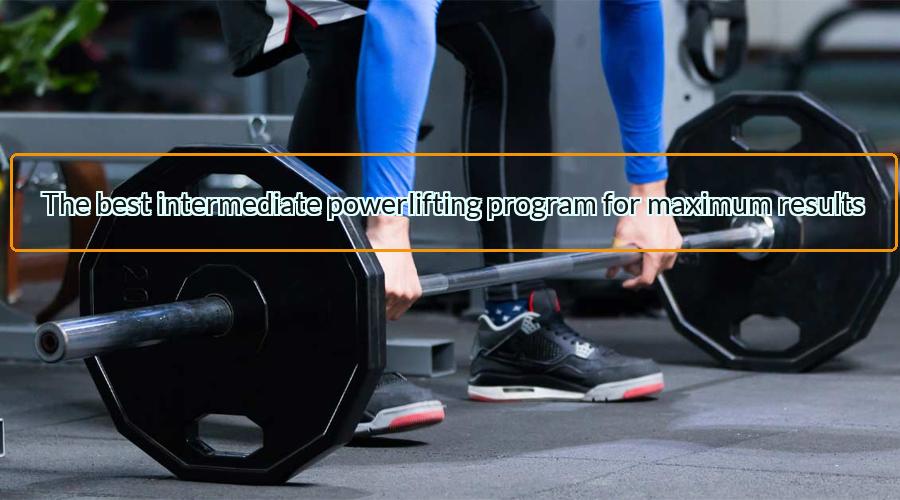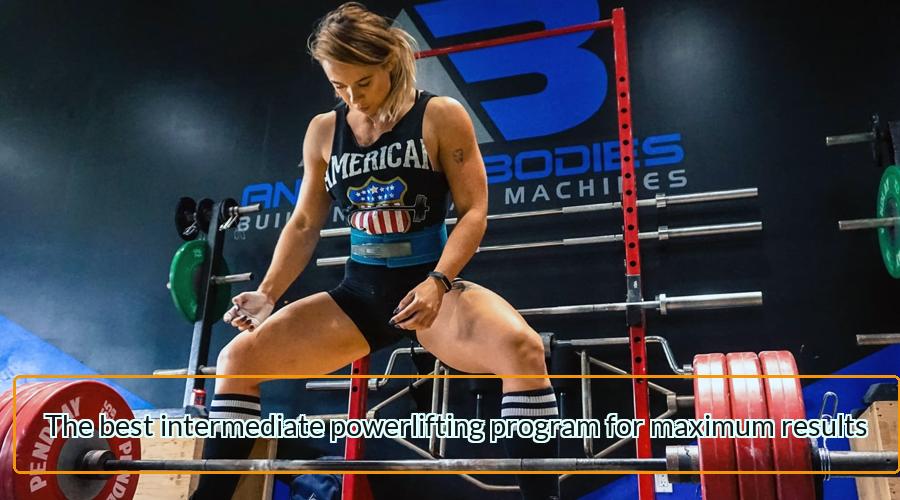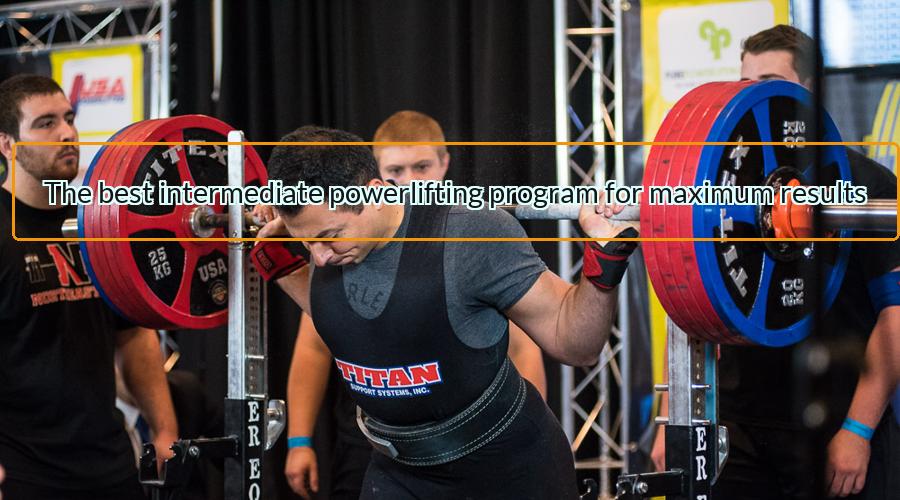
Powerlifting is an incredibly challenging and rewarding sport, but to get the best results you need a comprehensive program tailored to your individual needs. This article will discuss an intermediate powerlifting program that can help anyone looking to take their training to the next level. It provides a comprehensive approach that addresses all aspects of powerlifting: strength, endurance, techique, and diet.
What is an intermediate powerlifting program?
Powerlifting is a strength sport that focuses on developing optimal power and strength through the use of the squat, bench press, and deadlift. An intermediate powerlifting program is an effective way for individuals to build on their basic knowledge of these three lifts in order to further increase their performance.
An intermediate powerlifting program typically consists of four to five days of training per week, with each day focusing on different aspects of the three main lifts. This programming will generally include heavy sets with lower repetition ranges as well as lighter sets with higher reps. Accessory movements such as barbell rows and pull-ups can also be included in an intermediate program to target weaker muscle groups or address any technical issues that may arise during the main lifts. Additionally, variation within a single lift can be used to further challenge one’s progress throughout a training cycle (e.g.
How to start an intermediate powerlifting program?
Starting an intermediate powerlifting program can be a daunting task, particularly for those new to the sport. Powerlifting is a strength sport that consists of three primary lifts: the squat, deadlift and bench press. An intermediate powerlifting program is designed to build strength and muscle beyond the beginner level in a safe and effective way. Here’s how to get started:
Before beginning any powerlifting program, it is important to have a good understanding of proper form for all three lifts. Research technique tutorials online or speak with an experienced lifter for advice before attempting any of the exercises. It’s also important to find out which weight class you will compete in if you plan on competing at some point. Knowing your weight class can help determine appropriate starting weights as well as target rep ranges when planning your workouts.
Read more about best supplements for powerlifting

Benefits of an intermediate powerlifting program
When it comes to weightlifting, the intermediate level can often be overlooked in favor of more advanced options. However, an intermediate powerlifting program offers numerous benefits for those who are looking to make significant gains in strength and size. Not only is it well suited for those who have some experience with weight training but don’t want to jump into a full-on powerlifting routine; it’s also an excellent choice for people who are new to lifting and want a structured program that will help them easily transition into heavier weights.
The primary benefit of an intermediate powerlifting program is that it provides a foundation of exercises and lifts that can be used as stepping stones towards more advanced movements.
Best exercises in intermediate powerlifting program
Powerlifting is an intense form of strength training that requires dedication and discipline. For those looking to take their powerlifting game to the next level, an intermediate powerlifting program can be a great way to ramp up their regimen. This kind of program offers more advanced exercises for people who have already built a solid base in basic lifts. Here are some of the best exercises for an intermediate powerlifting program.
The deadlift is one of the classic powerlifting moves and can help build strength throughout your whole body when done correctly. It works multiple muscle groups at once and is a impressive feat of physical strength for any lifter. Squats are another valuable exercise for building core stability, especially in the lower body area. Bulgarian split squats are also helpful as they target single leg muscles while forcing you to maintain balance with each rep.

Tips for an intermediate powerlifting program
For those just starting out in powerlifting, or for those looking to make the next step up in their training, an intermediate program can be a great way to make progress and reach new goals. An intermediate powerlifting program is designed to provide more structure than beginner programs while still allowing lifters enough freedom to experiment with their technique and find what works best for them. Here are some tips to help you get the most out of your intermediate powerlifting program:
First, take time at the beginning of your journey as an intermediate lifter to assess your current strength level. Knowing where you stand can help you decide on which exercises will be most beneficial for you and create a plan that makes sense from a long-term perspective. Second, give each exercise its due diligence by prioritizing quality over quantity when it comes to reps.
Equipment for intermediate powerlifting program
Powerlifting is an intense form of strength training that requires dedication, focus, and the right equipment. Those looking to take their workout to the next level by beginning an intermediate powerlifting program should be prepared with the necessary gear to ensure safe and efficient lifting.
Intermediate powerlifters need a good quality weight set for squats, deadlifts and other exercises. Barbells and weight plates are essential in order to adjust the weight according to individual needs. Furthermore, having a spotter or rack system can help lifters perform heavy lifts safely. A pair of lifting shoes will also provide stability during squats and improve performance in other movements.
In addition, accessorizing your routine with resistance bands or specialty bars can help intermediate lifters add variety to their workouts while building strength in specific areas such as arms and shoulders.
Read more about powerlifting masters

Supplements for an intermediate powerlifting program
Intermediate powerlifters are those who have developed a solid foundation of strength and are looking to take their results to the next level. Supplementation can help powerlifters make the most of their effort in the gym by enhancing muscle growth, speeding up recovery time, and increasing energy levels. Here is what an intermediate powerlifting program should include for optimal results:
To maximize performance during workouts, athletes should focus on getting enough protein through a combination of dietary sources and supplements such as whey protein isolate powder. Protein helps build muscles mass while aiding in post-workout recovery. In addition to protein supplementation, intermediate lifters may need additional branched chain amino acids or BCAAs to reduce fatigue during long and intense training sessions.
Diet and nutrition during the intermediate powerlifting program
For those looking to build size, increase strength and enhance their performance in the gym, an intermediate powerlifting program can be a great choice. It’s important to note that nutrition plays a key role in the success of any exercise program, and this is especially true for the intermediate powerlifting program. Consuming the right macronutrients before and after your workout can help you achieve your goals quicker than ever.

The optimal diet for an intermediate powerlifting program should focus on lean proteins such as chicken breasts, fish or eggs. Carbohydrates are also important for supplying energy during training sessions, so it’s recommended to incorporate complex carbohydrates like sweet potatoes, brown rice and whole wheat bread into your meal plan. Additionally, healthy fats from sources like olive oil or avocados will help keep you feeling full while providing essential nutrients for muscle growth.
What are the benefits of intermediate powerlifting program for women?
There are a few benefits to an intermediate powerlifting program for women. First, it can help improve overall strength and muscle mass. Second, it can help improve explosiveness and speed. Third, it can help improve joint mobility. Finally, it can help improve balance and coordination.
What are the best exercises to do in a powerlifting program intermediate?
There is no one-size-fits-all answer to this question, as the best exercises for an intermediate powerlifter will vary depending on the individual’s strengths and weaknesses. However, some good exercises to include in an intermediate powerlifting program are the squat, bench press, and deadlift.
What are the benefits of starting a powerlifting program intermediate?
Powerlifting is a great way to improve your overall strength and physique. It also has a lot of mental benefits, such as discipline, perseverance, and self-confidence.